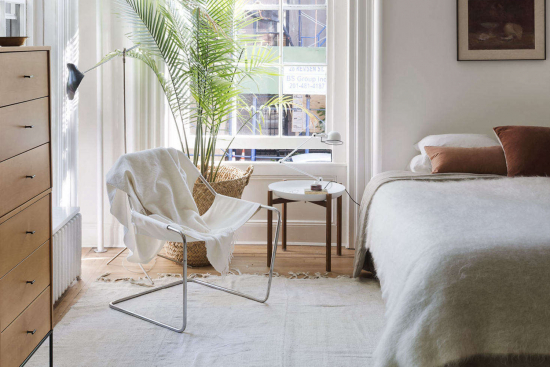For Aesthetes and Surfers: A New Vipp Guest House in Denmark’s “Cold Hawaii”
The latest Vipp guest house sits on its own in a coastal stretch of Denmark known as Cold Hawaii. Vipp is the family-owned Danish design company that gots its start in 1939 with the invention of a pedal-operated steel trashcan. Its design offerings have grown to include modular metal kitchen systems, bathroom vanities, furniture, lighting, even soap dispensers, all with the same industrial-modernist DNA as the original bin. And, of late, the brand has started opening lodgings in enchanted corners of the world.
Their approach is to enlist local design teams to build or remodel existing quarters as vacation rentals that double as Vipp showcases. It’s an approach that has worked extremely well: see, for instance, Vipp’s Tiny Cabins on a Fjord in Norway, The Vipp Mountain Hideaway in Andorra, and The Vipp Pop-Up Palazzo.
The Cold Hawaii house is an updated 1900 fisherman’s cottage on the North Sea; its 2.4 acres are part of Thy National Park, the largest national park in Denmark—and the only area of the country known for great surfing hence the Hawaii comparison. Caroline Hahn and Ebbe Lavsen, a young architect couple who specialize in historic updates, gave the house a contemporary reinvention using a palette of natural materials. It’s newly open for booking and still has summer availability. Join us for a look.
Photography courtesy of Vipp.


Copenhagen interior designer Julie Cloos Mølsgaard furnished the rooms with Vipp pieces—such as the Sculpture Table Lamp in white marble on the island—as well as work by local artists and area craft store and vintage finds.











